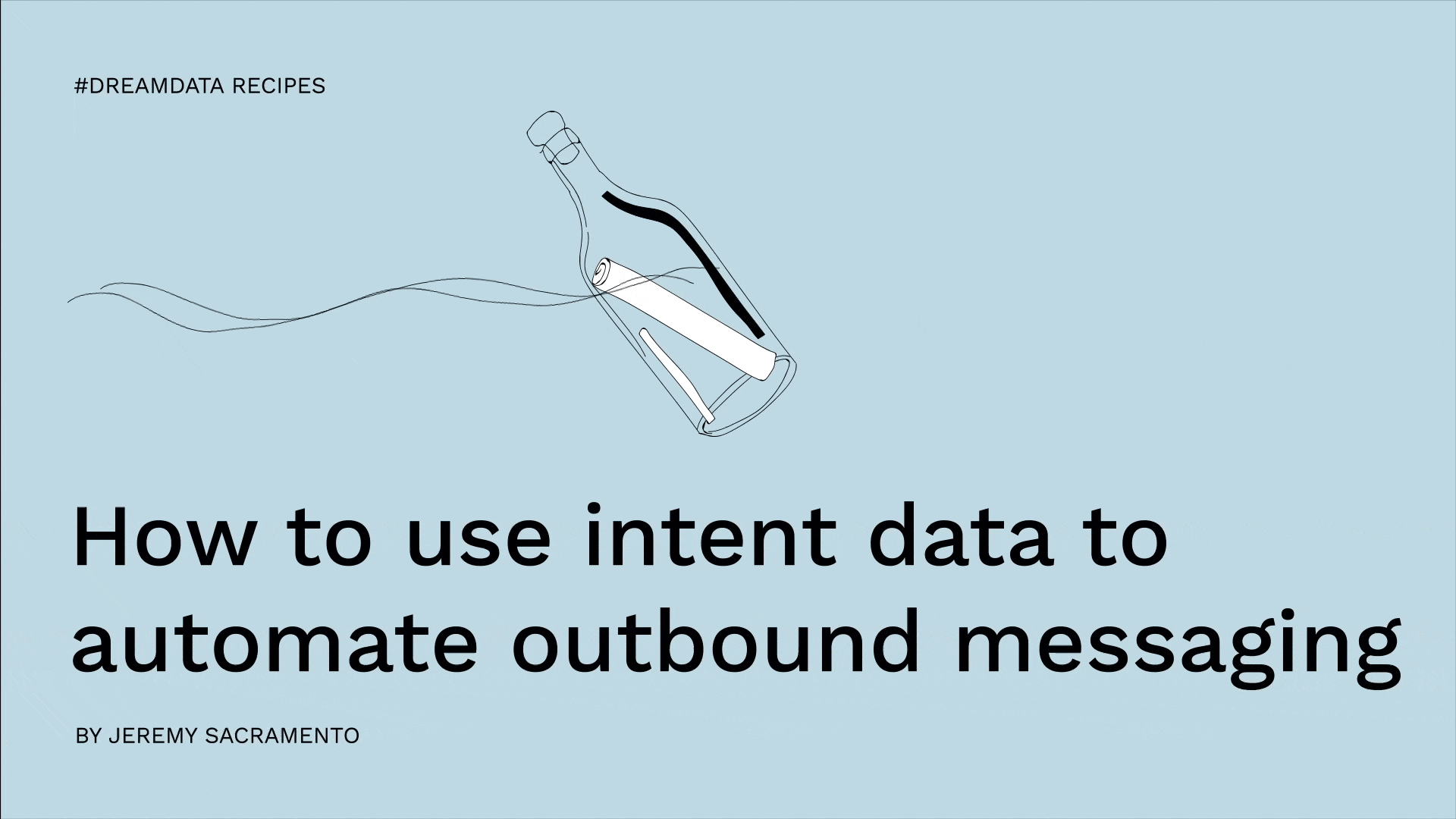#dreamdatarecipes
How to use intent data to automate outbound messaging
As we’ve said before, buyer intent signals are a great way to mould and improve your messaging; making it relevant and timely.
But, while we’ve proposed doing this manually - by looking at your customer journey map on Dreamdata - you can also take it a step further and automate the process.
One of Dreamdata’s most advanced users, Gorgias, has nailed automating their outbound messaging using their Dreamdata data and a Reverse ETL tool to send the data back to the platforms.
Here’s how you can emulate Gorgias’s use case:
Step 1: Track customer data and know your buyer intent signals
By setting up integrations with all the relevant tools in your B2B go-to-market tech stack, Dreamdata will be collecting and transforming most, if not all, of your customer journey data.
From this data, you can learn key buyer intent signals that show when a (qualified) lead is hot enough to sell to.
Once you’ve assessed:
The segment criteria of your Ideal Customer Profile (ICP) and,
The buying intent signals relevant to your buyer journey, e.g. browsing a category on a review site (more on our G2 integration here).
you’re ready to mine the data.
Step 2: Set up access to your Dreamdata data in your warehouse
Dreamdata offers direct access to your data as an add on in the Advanced package.
By default at Dreamdata we build your database on Google BigQuery - see instructions on setting up access here.
However, you can also connect the dataset of your Dreamdata database to Snowflake or Redshift via S3
Once you’ve got your access, you’re ready to push the data back to the relevant platforms using Reverse ETL.
Step 3: Reverse ETL your data to relevant platforms
With a reverse ETL tool like Hightouch you can then extract the data from the warehouse and begin to tailor the messaging on campaigns at scale, based on all the data points collected.
Find out more about using Dreamdata and Hightouch here.
Video: How Gorgias automates their outbound messaging with buyer intent data
(Transcript)
Yeah, the main traction from Gorgias has come from the outbound first, and the way we do outbound right now is a bit different from like the industry standard. Basically, we are collecting and aggregating so many different data points on the account we want to target. We are going after the Shopify merchants mainly. Right now what we do is we use our technicity to be able to build customer segments. We combine mainly Dreamdata and Hightouch, our reverse ETL, to extract the data from the warehouse and be able to tailor campaigns at scale, based on all the data points we have collected.
So like to make it clear, basically let's say like an account has a specific demographic criteria and has performed, what we qualified as a buying intent signal, such as installing our main competitor Zendesk, for instance. What we will do is we will fetch data from the warehouse. We will take a look at, okay, what are the different levels of engagement of this account across like Dreamdata, which is unifying the journey, and based on those elements, we will enrol people working for this company in a dedicated sequence, leveraging all those data points.



